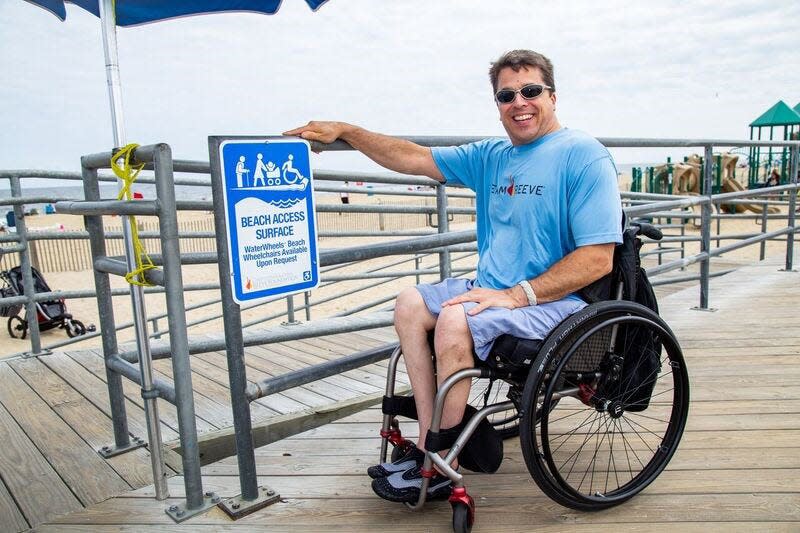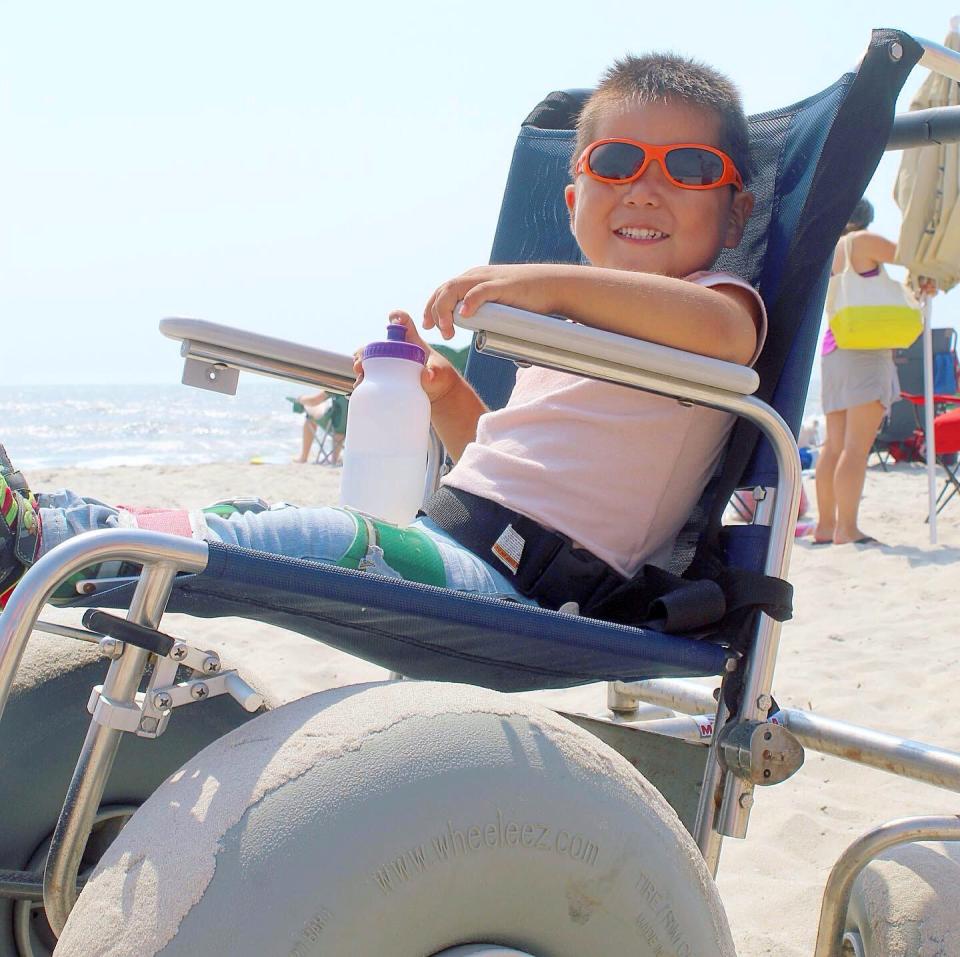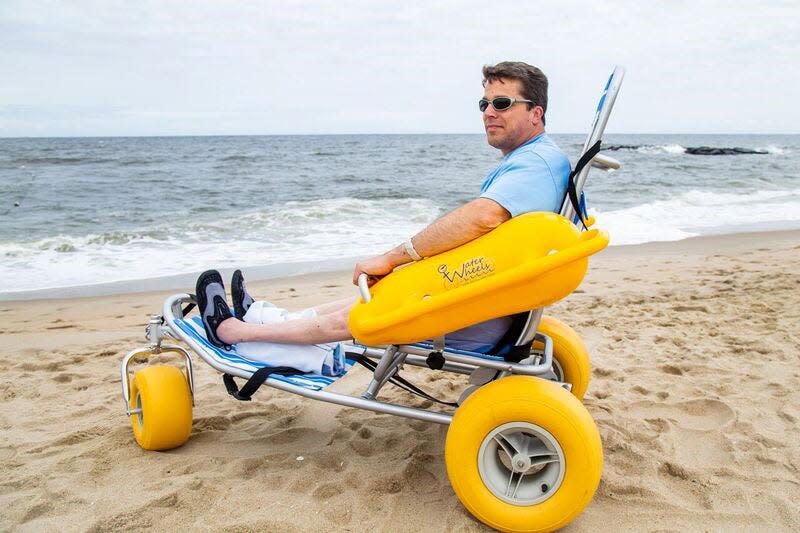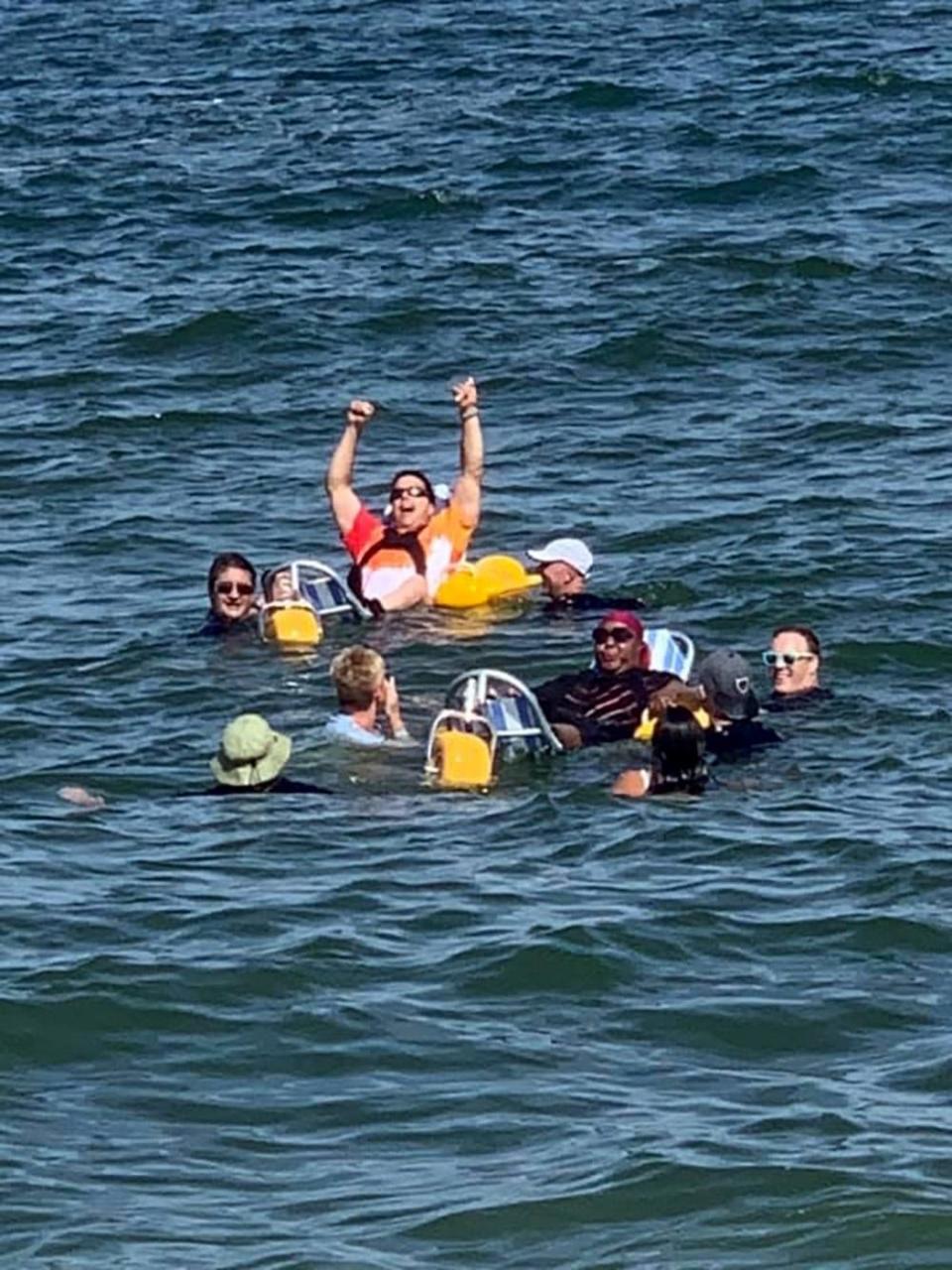'You don’t realize how inaccessible the world is': Beach wheelchair access is uneven but growing
The Jersey Shore was synonymous with summer for Verona’s Scott Chesney, whose family vacationed in Lavallette, New Jersey, every year until a stroke took his legs out from under him at the age of 15.
Now 50, Chesney has stayed away for decades. The thin wheels of his wheelchair were too easily bogged down in the sand and made his idea of heaven on earth unreachable.
For decades, wheelchair users had few options as beach wheelchairs with wheels large enough to navigate sand were in short supply, advocates and families said. But awareness, and mobility options, are finally growing at beaches.
Accessibility blog Wonders Within Reach has a list of the most-accessible East Coast beaches, by taking into account those that offer wheelchairs, surf chairs that can go into the water and accessible restrooms.

New Jersey beaches: 5 family-friendly beaches at the Jersey Shore
Jennifer Allen, 37, of Elizabethtown, Pennsylvania, tried various workarounds to get her 5-year-old, Jaden, who has spina bifida, onto the beach.
“We had experimented with every kind of wheel," she said. "We had an all-terrain wagon and an all-terrain stroller, but none of those could get across the sand. We wanted to make the beach a part of every summer. But it was a nightmare.
"You don’t realize how inaccessible the world is until you have someone who can’t use their legs,” Allen said.
But she and her husband, Phillip Allen, 38, were determined to show the world to their son. They decided to travel to beaches up and down the East Coast and founded Wonders Within Reach to share their findings.

From Florida to New Jersey, they investigated and came away with the conclusion that beach accessibility was “hit or miss.” St. Petersburg, Florida, had no beach wheelchairs, but Clearwater offered options, Allen said.
Ralph Coscia, president of Citizens' Right to Access Beaches in Ocean County, New Jersey, said he started providing a free beach chair service to anyone who needed it in the early 2000s.
Coscia and Allen said accessibility at beaches is getting better.
“Around 2010 to 2015, people started to get a little more involved and became more aware of ADA access to beaches,” said Coscia, referring to requirements included in the federal Americans with Disabilities Act. Rebuilding after Superstorm Sandy in 2012 gave New Jersey towns another chance to improve accessibility.
“In order for them to get (sand for beach) replenishing supplies they had to be more ADA-compliant,” he said.

For Chesney, the solution arrived in 2004 in Asbury Park, New Jersey, where he came across a beach chair that looked like a recumbent bicycle. It had pontoons for armrests that kept the chair afloat in the ocean.
“The first time I tried it out I was with two other people with disabilities and what was amazing was, we all had different intentions. Somebody just wanted to get to the beach for the first time; he was accommodated. The next one just wanted to put her feet in the water; she was accommodated. I wanted to go as far out into the ocean as possible and I was accommodated. It was amazing. It was great getting back into the ocean,” said Chesney.

"Many beaches are becoming more accessible,” he said, with ramps that extend beyond boardwalks and foldable mats and decking to extend even a typical wheelchair’s reach.
“These things weren’t even heard of back in 1986. Your family had to carry you onto the beach,” said Chesney, who has taken up surfing in recent years.
Still, there’s room for improvement.
A fully accessible day at the beach would not just include a beach chair, ramp and mats, but also a place to change, advocates said. Even an accessible bathroom doesn’t do the trick when there’s no place to sit up with your legs out in front of you while changing.
Chesney tries to make do with the floor of his van. "A lot of people when they are done swimming for the day want to get out of their wet clothes. The last thing that somebody wants to do with a mobility disability is sit in wet clothing. It can create skin issues and other issues,” he said.
Want to give a beach chair a shot? Take a look at Allen’s list of accessible shore towns at wonderswithinreach.com.
Coscia warns that demand can still outstrip supply.
“I would suggest they call the town and check," he said. "It is first-come, first-served. So if you get there later in the day, they may not have anything available. Some places will only transport you onto the beach and take you off the beach (in the rental chair), and you work on their schedules. So when you check with the municipalities, check what their procedures are."
This article originally appeared on NorthJersey.com: Beach wheelchair, surf wheelchair access uneven but growing

